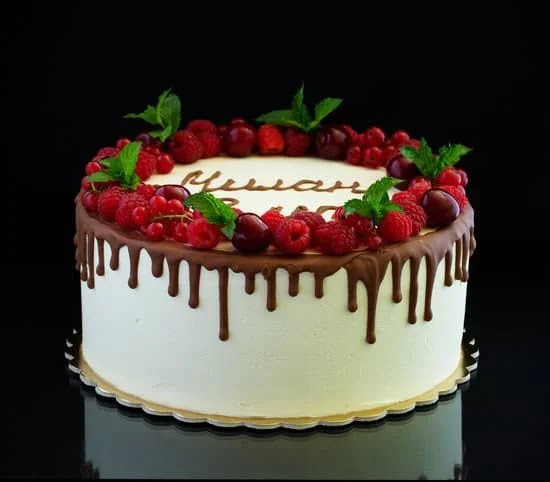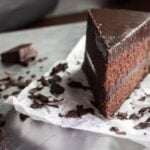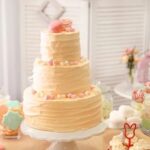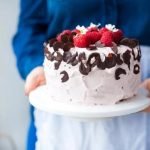Icing is the finishing touch that can take a plain cake from ordinary to extraordinary. It not only adds visual appeal but also enhances the taste and texture of a cake. Whether you’re a beginner baker or a seasoned pro, mastering the art of icing can open up a world of possibilities for creative cake decorations.
In this article, we will explore the different types of icing used in cake decorating, essential ingredients for making icing, step-by-step guides for various icing techniques, troubleshooting tips, and more. Get ready to elevate your cakes to new heights with beautiful and delicious icing creations.
When it comes to cake decorations, the right choice of icing can make all the difference. Icing acts as a blank canvas for artistic expression and allows you to bring your cake visions to life. From whimsical birthday cakes adorned with buttercream flowers to elegant wedding cakes covered in smooth fondant, each type of icing offers its own unique texture, flavor profile, and decorating possibilities.
But choosing an appropriate icing goes beyond just aesthetics. The right icing can also enhance the taste of your cake by providing moisture and sweetness. Buttercream adds richness and creaminess, royal icing offers a sweet crunchiness, fondant delivers a smooth sweetness with a chewy texture, and ganache provides a luscious chocolaty layer.
In this comprehensive article on how to make icing for cake decorations, we will delve into everything you need to know about creating stunningly decorated cakes. We will cover popular types of icings such as buttercream, royal icing, fondant, and ganache, as well as essential ingredients needed for making perfect icings. So let’s dive in and discover the wonderful world of cake decoration through icing.
Understanding Different Types of Icing
When it comes to cake decorating, choosing the right type of icing is essential. The type of icing used can greatly impact both the appearance and taste of a cake. Here, we will explore some of the most popular types of icing used in cake decorating: buttercream, royal icing, fondant, and ganache.
Buttercream icing is a classic choice that is known for its smooth and creamy texture. It is made by combining powdered sugar with butter or shortening and can be flavored with extracts such as vanilla or almond. Buttercream is versatile and can be easily tinted with food coloring to create vibrant colors for decorating cakes. It is also ideal for piping intricate designs.
Royal icing is a popular choice for creating intricate and detailed decorations on cakes. It is made by whisking together egg whites or meringue powder with powdered sugar until it forms stiff peaks. Royal icing dries hard when exposed to air, which makes it perfect for creating delicate shapes such as flowers or lace patterns. This type of icing can be colored using gel food coloring or left white for a classic look.
Fondant is a smooth and pliable icing that can be rolled out like dough before being draped over a cake to create a flawless finish. Fondant can be purchased pre-made or made from scratch using marshmallows or gelatin as a base. It provides a sleek and professional appearance to cakes and allows for intricate detailing and sculpting.
Finally, ganache is a luxurious option that adds an indulgent touch to any cake. It consists of chocolate melted into cream until it forms a glossy mixture. Ganache can be poured over cakes for a sleek finish or whipped to achieve a fluffier texture suitable for filling layers or piping decorations. It can be flavored with various extracts or liqueurs to add depth and flavor to the cake.
Choosing the right type of icing for your cake decorations is crucial in achieving the desired look and taste. Each type of icing offers its own unique properties, allowing for endless creativity and possibilities in cake decorating. Whether you opt for the creamy buttercream, delicate royal icing, versatile fondant, or luxurious ganache, experimenting with different types of icing will surely elevate your cake decorations to a whole new level.
| Type of Icing | Description |
|---|---|
| Buttercream | A classic choice known for its smooth and creamy texture. Versatile and perfect for piping intricate designs. |
| Royal Icing | A popular choice for intricate and detailed decorations. Dries hard when exposed to air, ideal for creating delicate shapes. |
| Fondant | A smooth and pliable icing that provides a flawless finish. Can be draped over cakes or used for sculpting intricate designs. |
| Ganache | An indulgent option made by combining chocolate and cream. Perfect for pouring over cakes or filling layers. |
Essential Ingredients for Icing
The key to making delicious and visually stunning icing for cake decorations lies in using the right ingredients. A well-made icing can take a cake from ordinary to extraordinary, adding flavor, texture, and aesthetic appeal. In this section, we will discuss the essential ingredients needed to make icing, including powdered sugar, butter, milk, flavor extracts, and food coloring.
Powdered sugar is the base for most types of icing. It is also known as confectioners’ sugar or icing sugar. The fine texture of powdered sugar helps create a smooth consistency in the icing. It dissolves easily and provides sweetness without any graininess.
Butter is another vital ingredient in many types of icing. It adds richness and flavor to the frosting. Unsalted butter is commonly used because it allows you to control the saltiness of the overall taste. Softened butter is easier to work with when making icing.
Milk or other liquids are added to adjust the consistency of the icing. Different types of icings may require different amounts of liquid. Milk is a common choice as it adds moisture without altering the flavor significantly. For those looking for a dairy-free alternative, options like almond milk or coconut milk can be used.
Flavor extracts such as vanilla extract, almond extract, or citrus zest can be added to enhance the taste of the icing. These extracts add depth and complexity to the overall flavor profile. However, it’s important not to overpower the icing with too much extract – a little goes a long way.
Food coloring is an optional ingredient that can be used to give your icing vibrant hues and make your cake decorations more visually appealing. Gel-based food colors are recommended as they provide intense pigmentation without altering the consistency of the icing.
| Ingredient | Role |
|---|---|
| Powdered sugar | Base for most types of icing; provides sweetness and smoothness |
| Butter | Adds richness and flavor; important in many types of icing |
| Milk (or other liquids) | Adjusts consistency; adds moisture without altering flavor significantly |
| Flavor extracts | Add depth and complexity to the overall flavor profile (e.g. vanilla extract, almond extract, citrus zest) |
| Food coloring | Gives vibrant hues to the icing; enhances visual appeal |
Step-by-Step Guide to Making Buttercream Icing
Buttercream icing is a classic and versatile choice for cake decorations. It is smooth, creamy, and easy to work with, making it an ideal option for both beginners and experienced bakers. In this section, we will provide a step-by-step guide on how to make a basic buttercream icing, along with some valuable tips on achieving the perfect consistency and flavor variations.
Gather Your Ingredients
To make buttercream icing, you will need the following ingredients:
- 1 cup (2 sticks) of unsalted butter, at room temperature.
- 4 cups of powdered sugar.
- 2-3 tablespoons of milk or heavy cream.
- 1 teaspoon of vanilla extract (or any other flavor extract).
Mixing Your Buttercream
- Start by beating the softened butter in a mixing bowl on medium speed until it becomes smooth and fluffy.
- Gradually add the powdered sugar to the butter, about one cup at a time. Mix well after each addition until all of the sugar is incorporated.
- Once all the powdered sugar is added, add in your milk or heavy cream one tablespoon at a time while continuing to mix on low speed. This will help achieve your desired consistency – add more liquid for a thinner icing or less for a thicker consistency.
- Finally, add in your vanilla extract (or other flavorings) and mix until everything is well combined and smooth.
Flavor Variations
One of the great things about buttercream icing is its versatility when it comes to flavors. Here are some popular variations that can take your basic buttercream up a notch:
- Chocolate Buttercream: Add cocoa powder or melted chocolate into your basic buttercream recipe.
- Citrus Buttercream: Incorporate citrus zest or juice (lemon, orange, lime) into your recipe for a refreshing twist.
- Coffee Buttercream: Dissolve instant coffee or espresso powder in a small amount of hot water, then add it to your buttercream for a delicious coffee flavor.
- Almond Buttercream: Substitute vanilla extract with almond extract for a nutty flavor.
Remember to start with small amounts of additional flavorings and gradually adjust according to taste.
By following this step-by-step guide, you can create a basic buttercream icing that is perfect for any cake decoration project. Remember, practice makes perfect, so don’t be afraid to experiment with different techniques and flavors to find what works best for you.
Mastering Royal Icing Techniques
Royal icing is a versatile and popular choice for intricate cake decorations. It has a smooth and hard finish, making it ideal for creating detailed designs like flowers, lace patterns, and piped borders. This section will provide step-by-step instructions on how to make and work with royal icing, as well as highlight some creative techniques to elevate your cake decorating skills.
Making Royal Icing
To make royal icing, you will need just a few simple ingredients: powdered sugar, egg whites (or meringue powder), and lemon juice or water. Start by sifting the powdered sugar into a bowl to remove any lumps. In a separate bowl, beat the egg whites until they become frothy.
Gradually add the sifted powdered sugar to the beaten egg whites while continuing to mix at low speed. Add a teaspoon of lemon juice or water at a time until you achieve the desired consistency – thick but still able to flow smoothly off the spoon.
Working with Royal Icing
Once you have made your royal icing, it’s important to know how to work with it effectively. To avoid drying out, cover your royal icing with plastic wrap directly touching its surface when not in use. Royal icing can be used immediately or stored in an airtight container for up to one week.
When working with royal icing, it’s crucial to have the right tools at hand – piping bags fitted with various sizes of round and star tips are commonly used for intricate details. To achieve fine lines or delicate lace patterns on your cake, use a small round tip; for rosettes or borders, try using a star tip for beautiful textured effects.
It’s also worth noting that royal icing dries quickly, so it’s important to work efficiently and keep unused portions covered to prevent them from hardening. If you need colored royal icing for specific designs or details on your cake, divide the mixture into separate bowls and add food coloring as desired.
Royal icing can be a bit tricky to master, so practice is key. Start with simpler designs and gradually move on to more complex patterns as you become comfortable with the consistency and techniques. With patience and practice, you’ll soon be able to create stunning designs using royal icing for your cake decorations.
Fondant as an Icing Option
Fondant is a popular choice for cake decorations due to its smooth, sleek finish and ability to create stunningly intricate designs. While store-bought fondant is readily available, making your own homemade fondant can be a more cost-effective and customizable option. Here are some tips on making and working with fondant for your cake decorating needs.
Ingredients for Homemade Fondant:
- Gelatin: This ingredient provides structure and elasticity to the fondant. It is important to dissolve the gelatin properly before adding it to the mixture.
- Water: The water helps dissolve the gelatin and combine all the ingredients together.
- Glucose or Corn Syrup: These sweeteners add pliability and flexibility to the fondant.
- Glycerin: Glycerin keeps the fondant soft, preventing it from drying out quickly.
- Flavorings and food coloring (optional): Add flavor extracts such as vanilla or almond extract, and food coloring for a personalized touch.
Making Homemade Fondant:
- Start by blooming the gelatin in cold water, allowing it to soften for about 5 minutes.
- Heat the softened gelatin mixture over low heat until it becomes clear liquid.
- In a mixing bowl, combine powdered sugar with glucose or corn syrup, glycerin, and any desired flavorings or colors.
- Gradually add the warm gelatin mixture into the powdered sugar mixture while stirring continuously.
- Once all ingredients are combined, knead the mixture on a clean surface until it forms a smooth ball of fondant.
Rolling Out and Applying Fondant:
- Dust your work surface with powdered sugar or cornstarch to prevent sticking.
- Divide the fondant into smaller portions if needed and knead it until it becomes pliable and easy to work with.
- Roll out the fondant using a rolling pin to the desired thickness, typically 1/8 inch thick.
- Carefully lift the rolled-out fondant and place it over the cake, starting from the top and gently working your way down the sides.
- Smooth out any air bubbles or wrinkles by gently using your hands or a smoothing tool to press the fondant against the cake.
Working with fondant requires some practice, but with patience and careful attention to detail, you can achieve beautiful results for your cake decorations. Homemade fondant offers greater flexibility in terms of flavorings and colors, allowing you to customize your creations even further.
Working with Ganache
Ganache is a versatile and decadent icing option that adds a luxurious touch to any cake. It is made by combining chocolate with heavy cream, resulting in a smooth, glossy, and chocolaty finish. Ganache can be used as both an icing and a filling, making it perfect for various cake designs and flavor combinations.
To make ganache, start by chopping high-quality chocolate into small pieces. The chocolate can be either dark, milk, or white depending on your preference. In a saucepan, heat the heavy cream until it starts to simmer. Pour the hot cream over the chopped chocolate and let it sit for a minute to allow the heat to melt the chocolate. Then, stir gently until all the chocolate has melted and the ganache becomes smooth and glossy.
The consistency of ganache can vary depending on its purpose. For pouring ganache over a cake or creating drips, it should be warm and runny enough to easily flow but still thick enough to coat the cake evenly. If you want to use ganache as a frosting that can be spread or piped onto a cake for more precise decorations, let it cool at room temperature or refrigerate it for a thicker consistency.
Working with ganache requires some practice to achieve the desired results. When pouring ganache over a cake, ensure that your cake is completely cooled and placed on a wire rack set over parchment paper to catch any excess ganache.
Start by pouring a small amount of ganache in the center of the cake and gently spread it towards the edges using an offset spatula until it drips down evenly. To get clean lines on your cake’s edges, chill your frosted cake in the refrigerator for about 10-15 minutes before pouring ganache.
Ganache is also great for decorative techniques such as piping borders or creating intricate patterns with stencils. Once cooled and thickened, transfer the ganache into piping bags with different tips for various designs. It’s important to note that ganache sets relatively quickly, so it is essential to work efficiently and plan your design beforehand.
Adding Flair with Decorative Techniques
Decorative Techniques to Elevate Cake Designs
When it comes to cake decorating, adding flair with decorative techniques can take your creations to the next level. From piping techniques to fondant cutouts and edible embellishments, there are endless possibilities for creating stunning cake designs. In this section, we will explore various decorative techniques that can elevate your cakes and make them truly impressive.
Piping Techniques
Piping is a versatile technique that allows you to create beautiful borders, rosettes, and even write messages on your cakes. Here are some popular piping techniques:
– Border Piping: Use a piping bag fitted with a star tip to create decorative borders around the top and bottom edges of your cake. You can experiment with different tip sizes and patterns to achieve various designs.
– Rosettes: To create rosettes, use a large star tip and starting from the center of the cake, pipe in a circular motion until you reach the desired size for each rosette. Repeat this process around the entire cake for a visually stunning effect.
– Writing: Use a small round tip or a writing tip to add personalized messages or names on your cakes. Practice writing on parchment paper before attempting it directly on the cake for better control.
Fondant Cutouts
Fondant is not only a great icing option; it can also be used for creating intricate cutouts that add an extra touch of elegance to your cake designs. Here’s how you can use fondant cutouts:
- Roll out your fondant using a rolling pin until it reaches the desired thickness.
- Use cookie cutters or specialty fondant cutters to create shapes such as flowers, butterflies, or letters.
- Gently press the cutout onto the surface of your frosted cake. If needed, use some water or edible glue to help it adhere.
- You can create a pattern or arrange the cutouts randomly, depending on your design.
Edible Pearls and Other Embellishments
Edible pearls, sprinkles, and other embellishments can add a touch of glamour to your cakes. Here are some ideas:
– Edible Pearls: Use edible pearls in various sizes to create elegant borders, small clusters, or patterns on your cake. They come in different colors, so you can match them to your overall color scheme.
– Sprinkles and Edible Glitters: Sprinkle colorful nonpareils or edible glitters over the surface of your frosted cake for a festive touch. You can also use them to create gradients or ombré effects.
– Fondant Embellishments: Use fondant to make small decorations like bows, flowers, or figurines that can be placed on top of the cake or used as accents around the sides.
With these decorative techniques at your disposal, you can transform a simple cake into an eye-catching masterpiece. Remember to practice and experiment with different designs and combinations to find what works best for you. The sky’s the limit when it comes to creativity in cake decorating.
Troubleshooting Common Icing Issues
When it comes to making icing for cake decorations, it’s not uncommon to run into a few issues along the way. However, with some troubleshooting know-how, you can easily overcome these common problems and create a smooth and flawless icing to adorn your cakes. Here are some common icing issues and tips on how to fix them.
One of the most frustrating issues is ending up with a grainy texture in your icing. This can happen due to undissolved sugar particles or incorporating ingredients at the wrong temperature. To solve this problem, make sure that your powdered sugar is fresh and doesn’t have any clumps by sifting it before use.
Also, ensure that your butter or shortening is softened but not melted before mixing in the sugar. If you still end up with a grainy texture, try beating the icing for longer on high speed to help dissolve any remaining sugar particles.
Another issue that may arise is a lumpy consistency in your icing. Lumps can occur when not enough liquid is used or when ingredients are not well incorporated. To fix this problem, gradually add small amounts of milk or water while continuously mixing until you achieve the desired consistency.
If you find lumps in your finished icing, strain it through a fine-mesh sieve before using. Additionally, ensuring that all your ingredients (such as butter) are at room temperature before mixing will help create a smoother consistency from the start.
Color bleeding is another common problem when working with food coloring in icing. When adding liquid food coloring directly to white icing, there’s a risk of the colors bleeding or blending together instead of staying vibrant and distinct.
To prevent color bleeding, consider using gel food coloring instead of liquid as it has a thicker consistency and won’t affect the overall texture of the icing. Alternatively, you can create a barrier by outlining your design with a thin layer of white icing before filling it in with the desired colors.
By addressing these common issues and following these troubleshooting tips, you’ll be able to overcome any obstacles that come your way when making icing for cake decorations. Remember to practice patience and maintain a positive attitude as mastering the art of cake decorating takes time and experience. With persistence and creativity, you’ll soon create stunning cakes with flawless icing that will impress anyone who sees or tastes them.
Conclusion
In conclusion, the art of cake decoration is truly elevated by the use of icing. Throughout this article, we have explored various types of icing options, from buttercream to royal icing, fondant, and ganache. Each type offers its own unique characteristics and techniques, allowing for a wide range of possibilities when it comes to creating stunning cake designs.
It is important to remember that choosing the right icing for cake decoration plays a crucial role in achieving the desired look and taste. Whether you are going for a smooth and glossy finish with ganache or intricate designs with royal icing, understanding the different types of icings and their applications will help you bring your creative vision to life.
Furthermore, I encourage readers to experiment and get creative with their icing techniques. The great thing about cake decorating is that there are endless possibilities for innovation and personalization. Try out different flavors and colors, explore new piping techniques or use edible embellishments to add flair to your designs. Don’t be afraid to step outside your comfort zone and let your imagination run wild – you never know what amazing creations you might come up with.
So go ahead and unleash your inner artist – choose the right icing for your cakes and let your creativity flourish. With the right techniques and a passion for experimentation, you can create beautiful and delicious works of art that will impress and delight anyone who sees or tastes them. Happy baking.
Frequently Asked Questions
What kind of icing do you use for cake decorating?
When it comes to cake decorating, there are several different types of icing that can be used. The choice of icing depends on various factors, including personal preference, the desired outcome, and the type of cake being decorated. Buttercream icing is a popular choice for cake decorating as it is easy to work with and can be piped into various designs.
It has a creamy texture and can be flavored and colored according to preference. Fondant is another commonly used icing for cake decorations, especially for creating smooth finishes or intricate designs. Royal icing is often used for intricate piping work and creating delicate details on cakes.
How do you make icing sugar for decorations?
Making icing sugar for decorations is a relatively simple process that involves grinding granulated sugar into a fine powder consistency. To make your own powdered or icing sugar at home, you will need granulated sugar and a blender or food processor. Simply add the granulated sugar to the blender or food processor and blend/process until it turns into a fine powder.
You may need to stop occasionally to scrape down the sides of the appliance and ensure that all the sugar is evenly processed. Homemade icing sugar can then be used in various sweet treats, including decorations for cakes, cookies, or other desserts.
What is the best frosting for piping flowers?
When it comes to piping flowers on cakes, buttercream frosting is often considered one of the best options due to its versatility and ability to hold its shape well. Buttercream made with butter lends a rich flavor that complements most cake flavors perfectly.
It should have a smooth consistency so that it flows easily through piping bags but still maintains structure when piped onto the cake surface. Swiss meringue buttercream is particularly popular for flower piping as it holds intricate details beautifully while still remaining stable at room temperature, making it ideal for floral decorations on cakes that need to hold their shape without melting or losing definition over time.

Welcome to our cake decorating blog! My name is Destiny Flores, and I am the proud owner of a cake decorating business named Cake Karma. Our mission is to provide delicious, beautiful cakes for all occasions. We specialize in creating custom cakes that are tailored specifically to each customer’s individual needs and tastes.





